Overview
Version
| Report Server Version | Functional Change |
|---|---|
11.0 | / |
Function Description
In actual use, you may often need to configure headers and footers for different reports. FineReport designer provides editing functions for report headers and footers, allowing you to configure them as needed.
Report Header
Choose Template > Report Header on the menu bar. The Edit Page Header window pops up, as shown in the following figure.
You can add headers to Default Page, Home Page, Last Page, Odd Page, or Even Page. Default Page refers to all pages.
If headers are added to both Default Page and other logical pages (such as Home Page), then all pages, except those with explicitly configured headers or footers, will inherit the settings from Default Page.
The header height is consistent across all pages. Therefore, changing the height on any single page will automatically update the header height on all pages.
 Note:
Note:
The following uses the report header as an example to introduce how to define headers and footers. You can display the current page number and total number of pages in the center of the header, and display the company name on the right side.
Page Number Insertion
1. Select Center Section, click the Page Number icon on the toolbar, configure the font style, and click OK, as shown in the following figure.

2. Click the Text icon, enter / (used to separate the current page number from the total number of pages), and click OK, as shown in the following figure.

3. Click the Total Number of Pages icon on the toolbar, configure the font style, and click OK, as shown in the following figure.

Company Name Insertion
Select Right Section, click the Text icon on the toolbar, enter the company name, and click OK, as shown in the following figure.

In addition to text, page number, and total number of pages, you can also insert elements such as date, time, image, and newline character.
Display Height Setting
After defining the content to be displayed in the header, you must set a height that is sufficient to display all the content properly.

At this stage, the header definition is completed. The footer can be defined using the same method. You can also display special content on specific pages as needed.

Report Footer
Choose Template > Report Footer on the menu bar. The Edit Page Footer window pops up, and the setting items are similar to those for the report header, as shown in the following figure.

 Note:
Note:Header and Footer Export
After the header and footer are configured, you can export the report using the Export function on the toolbar. The header and footer will be included in the exported PDF, Word, or Image files.
For details, see Header and Footer for Exported Word Files.
Effect Display
PC
The effect can be previewed only in Pagination Preview.
Mobile Terminal
Report headers and footers are not supported on mobile terminals.







